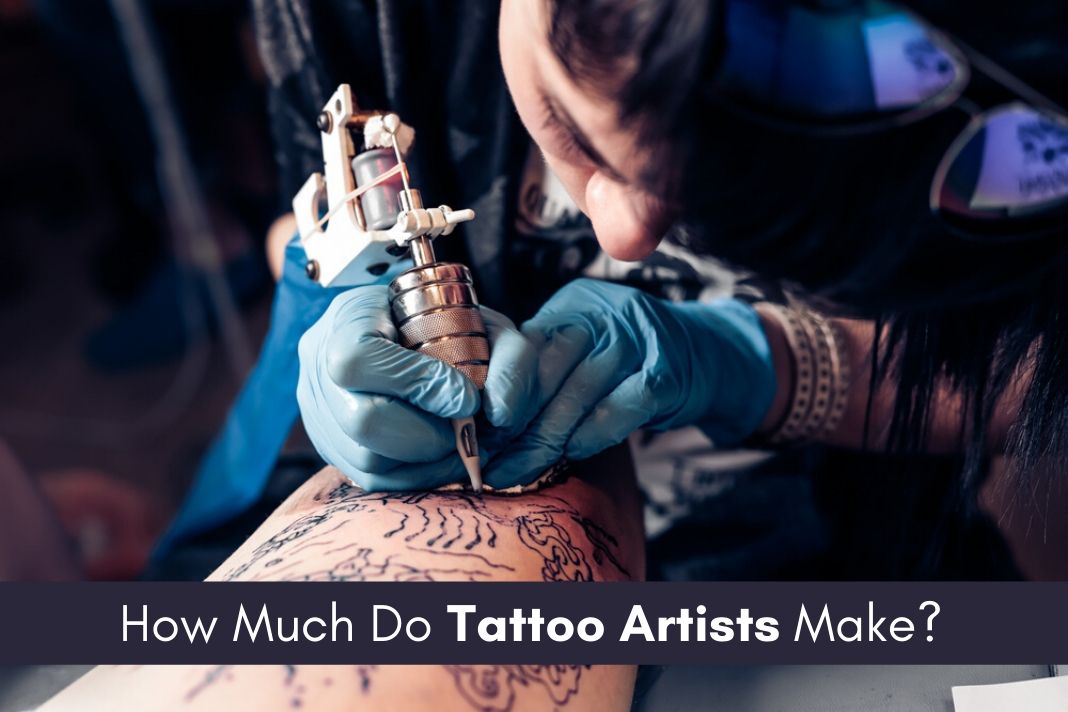
Tattoos are an excellent bargain when you consider how long they last. For example, Ötzi, the Iceman sported sixty-one tattoos on his 5,300-year-old mummified body, which was excavated in the Alps. Tattoo artists can make great money because they do everything from stunning full body designs to infinity symbols on their fingers. Skilled artistry, steady hands, and raw courage are required when the skin is your canvas. Reputed body artists can make up to $500 per hour or more. But most work in private studios where clients pay around $200 per hour, and daily visitors can range from nil to a line out the door.
Job Description
The task of a tattoo artist is to fulfill and understand the client’s wishes. Some clients know precisely what they want, while others spend hours perusing tattoo catalog books. Like bartenders and counselors, tattoo artists must be excellent listeners, because every tattoo has a story, even if it’s just an impromptu whim on summer break.
Tattoo artists earn reputations for a specific style, such as fine line, watercolor, or realism. Their craft consists of different inks, differently sized needles, and industrial equipment that must be sterile and used per health regulations. Simple designs can take less than one hour and cost less than $150, whereas elaborate tattoos can require multiple sittings, costing thousands of dollars.
[Also Read: How to be a Freelance Tattoo Artist]
Education
No traditional education is required to be a tattoo artist, although some artists do have college degrees in fine art or other areas. Classes in accounting, marketing, and business can be advantageous if you hope to own your own tattoo studio and enjoy a higher income. Typically, the career path to becoming a tattoo artist starts with informal training under an experienced, respected tattoo artist or an apprenticeship.
How Much Do Tattoo Artists Make
Careers in the U. S:
If you achieve the legendary status of Kat Von D at High Voltage Tattoo in Los Angeles, you, too, might earn up to $500 per hour. Until then, you will probably work as a subcontractor in a tattoo studio, making about $50 to $60 per hour in commission, assuming the client pays the average going rate of $200 per hour. After paying remunerations and overhead, the owner of the tattoo studio pockets about $70 per $200 charged to the client.
If you are just beginning out, you may want to provide free tattoos until you get a hands-on experience of what you are doing and when you have a niche of your own. While building your brand and establishing a name for yourself, you might need to work a secondary job for a steady income source.
Industry
Tattoo shops are located all over the world, in small towns and big cities. Evening and weekend hours are typical. The occupation requires excellent communication skills and meticulous concentration to discuss the process, design plans, and aftercare. Being able to not make mistakes after working long hours, focus, and physical stamina can also increase your potential annual income.
Years of Experience
Word of mouth, experience, and advertising on social media makes a big difference in earning power. Famous tattoo artists have waiting lists of clientele. Annual income increases as you bag more clients. Initially, you might only do a few tattoos a day. Once a loyal client base is established, an independent contractor or a freelancer or can successfully open a tattoo studio. Being on a reality TV show can spur the market, too.
Careers in Europe: Location wise, rates change remarkably. In London or the south, in particular, some professionals can charge up to £160 per hour, whereas the standard cost in the north is from £90 – £100 per hour.
Careers in Asia: An entry-level tattoo artist (1-5 years of experience) earns an average salary of $25,768 (Singapore). On the other hand, a senior level tattoo artist (9+ years of experience) earns an average salary of $39,758.
Job Growth Outlook
The BLS clubs tattoo artists with craft and fine artists. The BLS estimates that the demand for craft and fine artists will grow six percent from 2016 to 2026, which is above average. Career opportunities will be best for those who are gifted in art and marketing. Fine artists had median annual earnings of $48,760 in May 2019, meaning that half earned more and half earned less.(1)
Recommended Articles ;
How Much Can You Really Earn As a Voice-Over Artist?
How Much Can You Really Earn as a Barber?




